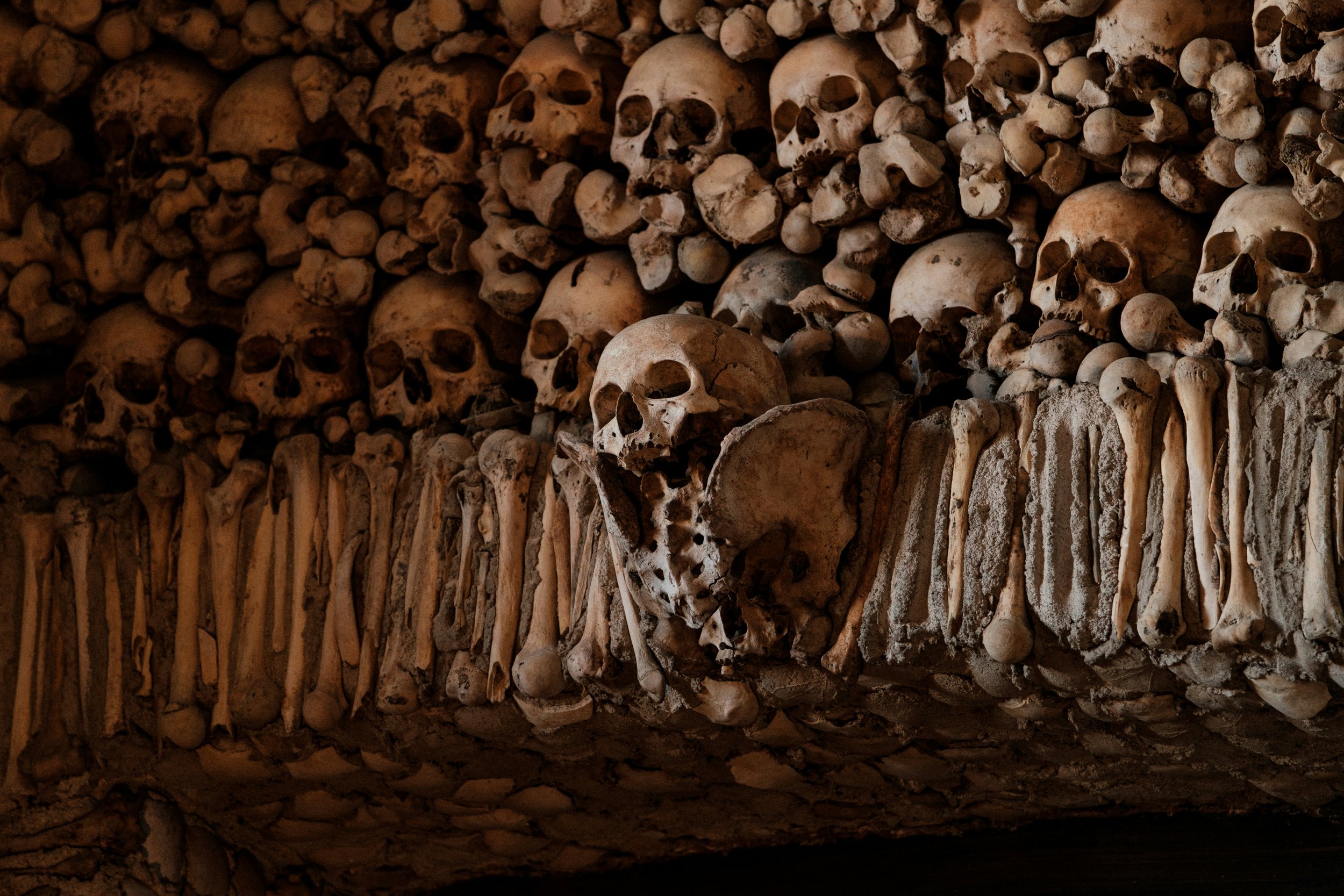
It’s anything but static…
The Wonderful Mystery of Ossified Tissue
The human body owes much of its shape, structure and ambulation to a scaffold of 206 ossified biological organs we refer to simply as bones, collectively as the skeleton. Contrary to their static appearance decorating the walls of a huntsman’s cabin, dangling in the back of a biology class or perhaps even adorning your favorite Texan steak house, the bones within all living things are anything but still. Under a sweater of fibrous proteins that create a sort of sheath (periosteum) lies the life of the bone (endosteum), the unit of cellular colleagues that manage the measure of you. It is far too convoluted a place to easily relay here, not to mention how quickly that discussion would betray the kindness you have extended in entertaining me this far, but rest assured there is an entire world of intricacy on the surface of each of your bones shaping who you are and what becomes of you next. A fossilized humerus behind the case of a natural history museum would likely lull you into the lie that there is little of this piece of you beyond form and function, but I swear if you could see even a glimpse of the world of your humerus you would weep as seeing the work of some master lost to time. However, I will regale you a moment longer of my favorite pair of citizens in and on the world of your bones – The Osteoclast and Osteoblast.
Across your skeleton there exist paired teams of Osteoclasts and Osteoblasts in tight coordination remaking each and every one of your bones. Whether we appreciate their kindness or not, this team – the multicellular unit – completely strips away and remakes every bone in your body. So much so, that with each decade of life - you may feel quite yourself, but I assure you, you have an entirely new skeleton. In tight coordination, constantly communicating with each other, just a few microns separated, these giant osteoclasts secrete acid and enzymes underneath themselves and literally eat your bone. All the while, teams of small osteoblasts release a soft, collagen rich matrix that they mineralize to replace that which was lost. These teams should build you 5 to 6 skeletons before you have any issues. Sometimes with age and hormonal changes, their communications become harder to maintain. At this point, they miss the mark a bit. This is why about half of women will develop osteoporosis in their later years and why most of us will live to see our stature shrink a bit before we find the end.
Osteoclasts and Osteoblasts take away and rebuild your bone - bit by bit - every decade of your life. (Top) An illustrated progression of the role of osteoclasts and osteoblasts in bone remodeling. In response to signaling from osteocytes embedded in the bone (not pictured), the bone lining cells hiding your mineralized tissues lift and provide room for monocytes to respond to these signals by crossing from the bone marrow and sitting down on the bone as a specialized precursor cell. In addition, a circulating cell from the mesenchymal stem cell lineage also cross and sit down as an osteoblast precursor. The osteoclast precursors respond to further signaling from the osteocytes, fuse, and begin eating and removing the bone. In communication with the osteoclast, the osteoblast precursors differentiates into osteoblast and begins to replace the old bone that the osteoclast eats with new bone. (Bottom) An illustration of our approach of taking the bone marrow out of a mouse model we use in the lab and culturing the marrow. As we activate the signaling that elicits normal bone remodleing using specialized genetic tools, we see the formation of multinucleated osteoclasts (Pink, arrowheads) and osteoblast precursors (Blue Nuclei, arrows) that actively talk with their friends.

